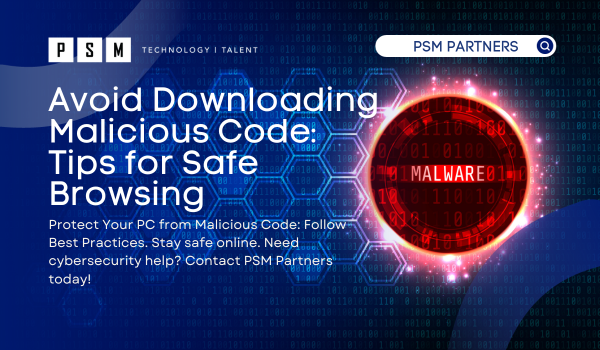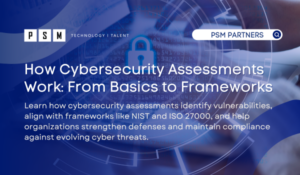Table of Contents
ToggleAvoiding downloading malicious code is crucial in today’s digital age. Malicious code, also known as malware, refers to any software designed to harm or damage computer systems, steal sensitive information, or take control of devices without the user’s knowledge or consent. Malware can come in various forms, including viruses, worms, trojans, spyware, ransomware, and adware.
To avoid downloading malicious code, users must take precautions when downloading and installing software, browsing the internet, and opening email attachments. Some of the best practices for avoiding malware include downloading software only from trusted sources, keeping antivirus and operating system software up to date, avoiding suspicious emails and links, and being cautious when downloading files from unsecured websites. Additionally, users should avoid using cracked or pirated software, which is often bundled with malware. By following these guidelines, users can protect their systems and personal information from cyber threats.
What is Malicious Code?
Malicious code is a type of software that is designed to harm computer systems, steal data, or gain unauthorized access to networks. It can take many forms, including viruses, worms, Trojan horses, spyware, adware, and ransomware. Malicious code can be spread through various methods, including email attachments, infected websites, and malicious software downloads.
Common Types of Malicious Code
Malicious code is a term used to describe a variety of malware programs that can harm, exploit, or compromise computer systems, networks, and data. Here are some of the most common types of malicious code:
Viruses
A computer virus is a type of malicious code that infects a computer system by attaching itself to a legitimate program or file. Once the infected file is executed, the virus can replicate itself and spread to other files and computers. Some viruses are designed to corrupt or delete files, while others are used to steal personal information or launch attacks on other systems.
Worms
Worms are similar to viruses in that they can replicate and spread to other computers. However, worms do not need to attach themselves to a legitimate file or program to infect a system. Instead, they use network vulnerabilities to spread from one computer to another. Worms can be used to launch denial-of-service attacks, steal sensitive information, or create botnets.
Trojan Horses
A Trojan horse is a type of malicious code that disguises itself as a legitimate program or file. Once the Trojan horse is executed, it can perform a variety of malicious actions, such as stealing sensitive information, installing other malware programs, or allowing remote access to the infected system. Trojan horses are often spread through email attachments, social engineering tactics, or by exploiting software vulnerabilities.
Ransomware
Ransomware is a type of malicious code that encrypts the victim’s files and demands a ransom payment in exchange for the decryption key. Ransomware can be spread through email attachments, malicious websites, or by exploiting software vulnerabilities. Once the ransomware infects a system, it can cause significant damage by encrypting important files and disrupting business operations.
Adware
Adware is a type of malicious code that displays unwanted advertisements or pop-ups on the victim’s computer. Adware can be installed by downloading free software or visiting malicious websites. While adware is not as dangerous as other types of malware, it can be annoying and intrusive, and can slow down the victim’s computer.
How Malicious Code is Spread
Malicious code can be spread through various means, including phishing attacks, compromised websites, and software vulnerabilities.
Phishing Attacks
Phishing attacks are a common method used by cybercriminals to distribute malicious code. They typically involve sending fraudulent emails that appear to be from a legitimate source, such as a bank or social media platform. The email may contain a link or attachment that, when clicked, downloads and installs the malicious code onto the victim’s device.
To shield against falling prey to phishing attacks, users must exercise vigilance with unsolicited emails and steer clear of engaging with links or downloading attachments from unfamiliar or unverified sources. An added layer of protection can be achieved by configuring one’s email client to automatically block potentially harmful content or, even more effectively, by integrating mail management software specifically designed to safeguard email communications.
Compromised Websites
Compromised websites can also be a source of malicious code. Cybercriminals may inject malicious code into legitimate websites, or they may create fake websites that appear to be legitimate. When users visit these sites, the malicious code may be downloaded and installed onto their devices.
Another emerging trend is the use of fake QR codes. Cybercriminals have been known to create fraudulent QR codes that lead users to malicious websites or apps. These fake QR codes can be placed on posters, flyers, or even legitimate-looking websites. When scanned, they can expose users to various online threats.
To protect against compromised websites and fake QR codes, users should be cautious when clicking on links, scanning QR codes, and should avoid visiting suspicious or unfamiliar websites. They should also ensure that their web browser is up-to-date and that they are using reputable antivirus software.
Software Vulnerabilities
Software vulnerabilities can also be exploited by cybercriminals to spread malicious code. These vulnerabilities may exist in operating systems, applications, or plugins, and can be used to gain unauthorized access to a user’s device.
To protect against software vulnerabilities, users should ensure that their software is up-to-date and that they are using the latest version of their operating system. They should also be cautious when downloading and installing software from unknown sources and should only download software from reputable sources.
By being aware of the various methods used to spread malicious code, users can take steps to protect themselves and their devices from cyber threats.
How to Recognize Malicious Code
Malicious code can be difficult to recognize, as it often appears innocuous or is hidden within legitimate software. However, there are several signs that can indicate the presence of malicious code on a device or system.
Signs of Malicious Code:
- Sudden Decrease in System Performance: One common sign of malicious code is a sudden decrease in system performance. Malware can consume system resources and slow down the device or system. Additionally, malware may cause the device or system to crash or freeze.
- Appearance of Pop-Up Ads or Browser Redirects: Another sign of malicious code is the appearance of pop-up ads or browser redirects. Malware may inject ads into web pages or redirect the user to malicious websites. These ads and redirects can be a source of malware infections.
- Unexpected or Unauthorized Changes to Device or System: Users should also be wary of unexpected or unauthorized changes to their device or system. Malware may alter system settings, install new software, or modify existing files. These changes can be an indication of a malware infection.
By recognizing these signs of malicious code, users can take steps to protect their devices and systems from malware infections.
Prevent the Spread of Malicious Code
Preventing the download of malicious code is crucial to maintaining the security of your computer and personal or company information. By following these preventive measures, you can significantly reduce the risk of downloading malware onto your device.
Regular Software Updates
One of the most effective ways to prevent the download of malicious code is to keep your software up to date. Regularly updating your operating system, web browser, and other software can help patch security vulnerabilities and protect against known exploits.
Secure Network Connections
Secure network connections are essential to preventing the download of malicious code. Avoid connecting to unsecured public Wi-Fi networks, as they may be compromised and allow hackers to intercept your data. Instead, use a virtual private network (VPN) or a secure connection provided by your employer or internet service provider.
Anti-Malware Software
Anti-malware software can help detect and prevent the download of malicious code. Install reputable anti-malware software and keep it up to date to ensure that it can detect the latest threats. Be sure to scan your computer regularly to detect any potential threats that may have slipped through your defenses.
By following these preventive measures, you can significantly reduce the risk of downloading malicious code onto your device. Stay vigilant and keep your software up to date to ensure that your computer remains secure.
How to Handle Suspected Malicious Code
If you suspect that your computer has been infected with malicious code, it is important to take immediate action to prevent further damage. Here are some steps you can take:
- Disconnect from the Internet: As soon as you suspect that your computer has been compromised, disconnect it from the Internet to prevent the malware from communicating with its command-and-control server.
- Run a scan with your antivirus software: If you have antivirus software installed on your computer, run a full system scan to detect and remove any malicious code. Make sure your antivirus software is up-to-date, as new threats are constantly emerging.
- Use a malware removal tool: If your antivirus software is unable to detect or remove the malicious code, consider using a malware removal tool. These tools are specifically designed to detect and remove malware that may be missed by traditional antivirus software.
- Restore from a backup: If you have a backup of your files, consider restoring your computer from that backup. This will remove any malicious code that may be present on your computer. Make sure to scan your backup files for malware before restoring them.
- Reinstall your operating system: If all else fails, you may need to reinstall your operating system to remove the malicious code. This should be a last resort, as it will erase all of your data and programs.
By taking these steps, you can help prevent further damage to your computer and protect your personal information from being stolen by cybercriminals.
How Can You Avoid Downloading Malicious Code
Downloading malicious code can be highly detrimental to one’s computer and personal information. To prevent this from happening, it is essential to follow certain security measures while browsing the internet and downloading files.
One of the key strategies to avoid downloading malicious code is to use an antivirus program. Antivirus software can detect and delete any malicious code it finds, ensuring that you don’t download anything dangerous. Additionally, it is important to scan all external files before uploading them to your computer and to avoid browsing unsecured websites.
Another effective way to prevent downloading malicious code is to use trusted download sources. This can help ensure that the files you download are safe and secure. It is also recommended to avoid accessing website links, buttons, and graphics in emails or pop-ups generated by email messages.
In summary, taking proactive steps to prevent downloading malicious code can help protect your computer and personal information from harm. By following the tips and strategies outlined above, you can browse the internet and download files with confidence and peace of mind.
Cybersecurity and Incident Response Services
PSM Partners is your trusted ally in safeguarding your IT infrastructure through top-tier cybersecurity and incident response solutions. Based in Chicago, we specialize in providing comprehensive managed services and support to institutions.
With PSM Partners by your side, your organization gains access to cutting-edge cybersecurity technology and unmatched technical support. Don’t leave your cybersecurity to chance. Contact us today at (312) 940-7830 or submit a contact form to fortify your IT infrastructure and ensure a rapid, effective response to any incident.
Related Insights
What is an SOC Audit?
If your organization handles sensitive data or provides services to...
Read MoreHow Cybersecurity Assessments Work: From Basics to Frameworks
Cybersecurity threats are becoming more sophisticated and widespread, putting sensitive...
Read MoreFuture-Proof Your Technology: Why You Should Consider a Computer Upgrade Every 3 Years
Key Takeaways Three-Year Upgrade Cycle Is Ideal Upgrading business computers...
Read MoreRecovery Time Objective (RTO) vs Recovery Point Objective (RPO): What’s the Difference and Why It Matters for Your Business
Key Takeaways RTO Explained RTO (Recovery Time Objective) is how...
Read MoreAbout the Author

James Rangel
James transitioned from a background in Asset Protection Investigations and Physical Security to the IT domain after earning a master’s degree in information security. With his investigative mindset intact, he has ascended from the Service Desk to the Risk and Security team, where he is dedicated to proactively identifying cyber threats and safeguarding client assets.





